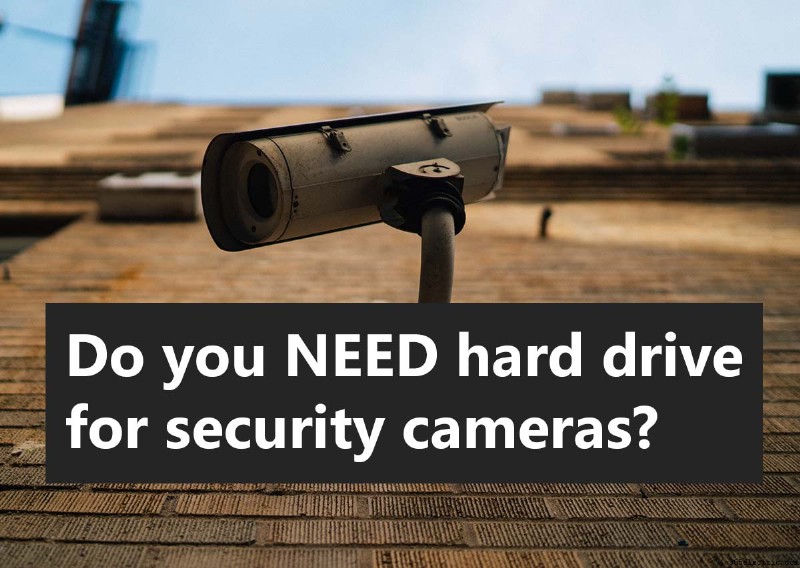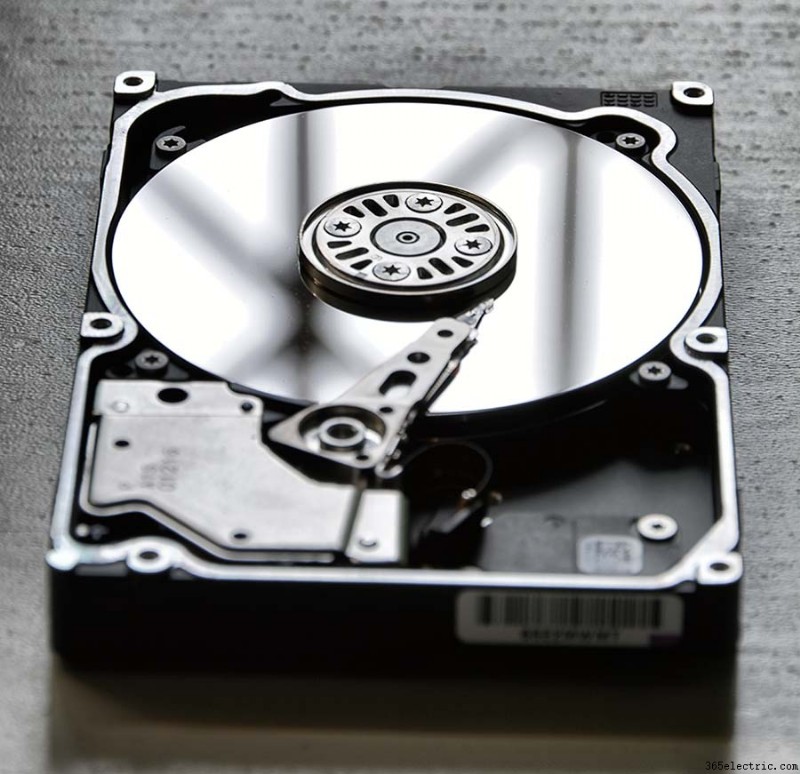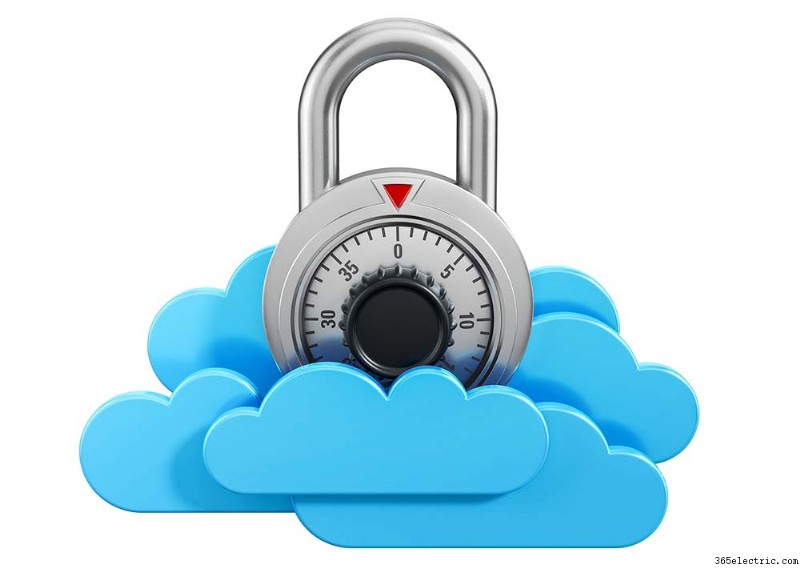O armazenamento de vídeo é o principal componente de todos os
sistemas de câmeras de segurança . Esse é o objetivo de todo um sistema de CFTV, ter evidências em vídeo de possíveis incidentes em sua propriedade.
Ao pesquisar sistemas de segurança, você pode se deparar com a pergunta se precisa de um disco rígido para câmeras de segurança e a resposta é complicada. Hoje em dia os sistemas de segurança são capazes de gravar imagens de longa duração e de alta resolução.
Para responder à pergunta:
Os sistemas de câmeras de segurança (DVR, NVR) precisam de discos rígidos para armazenar as gravações. Caso contrário, você pode terminar com um sistema que fornece apenas um feed de exibição ao vivo. Além disso, muitas câmeras IP vêm com slots para cartão microSD, o que significa que você pode armazenar os vídeos diretamente na câmera, embora a longevidade da filmagem seja bastante curta.
Neste artigo, falaremos sobre se as câmeras de segurança precisam de discos rígidos, quantos discos rígidos, quanto tempo você pode gravar e em quais casos você não precisa de discos rígidos.

Você precisa de um disco rígido para câmeras de segurança DVR ou NVR
Sistemas de câmeras de segurança com NVR ou DVR
Neste caso, as câmeras não se destinam a funcionar de forma independente, mas fazem parte de um sistema de CFTV centrado em um gravador. Este gravador pode ser DVR (para câmeras analógicas HD) ou NVR (para câmeras IP).
Todas as câmeras de segurança enviam o feed de vídeo para o gravador que armazena as imagens em seus discos rígidos (internos). O número de discos rígidos instalados depende do modelo e do fabricante do gravador. Alguns gravadores levam 2 discos rígidos, ou 4 peças ou até 8, e assim por diante. O tamanho dos discos rígidos começa em 1 TB e até 12 TB por slot. Verifique a folha de especificações para descobrir quais tamanhos de disco rígido são suportados.
Basicamente, quanto mais discos rígidos instalados e quanto maior sua capacidade, mais tempo as câmeras de segurança irão gravar. Descubra quanto tempo de armazenamento de vídeo é bom o suficiente para você e, em seguida, compre os discos rígidos. Certifique-se de instalar
discos rígidos com classificação CCTV que são muito mais confiáveis e proporcionam uma vida útil maior quando comparados aos discos rígidos de computador comuns.

Use cartões microSD para gravar diretamente na câmera de segurança
Certas câmeras de segurança suportam cartões microSD, elas possuem slots embutidos onde você pode instalar um cartão microSD. O tamanho dos cartões pode variar de 64 GB a 256 GB e assim por diante. Consulte este artigo:
Os melhores cartões microSD (memória) para câmeras de segurança .
In this scenario, the security camera will record the footage directly on the microSD card. You can playback and backup the footage of the microSD by using a computer or smartphone app. The downside is that microSD cards are relatively small compared to hard drives and you may only record a few days before the overwrite starts.
This solution is recommended if you don’t need a whole security system, one or two cameras is enough. You can save money and the cameras will still be able to store the recordings on their built-in microSD cards.
Cloud storage
Most IP cameras, NVRs, or DVRs offer the option of cloud recordings which eliminates the need for on-site storage, letting the cloud service provide storage of the recordings on their servers.
Usually, cloud storage providers can record for a longer period of time depending on your needs, let’s say from one month up to a few months. Another thing to keep in mind, nothing will be recorded on the cloud if the internet doesn’t work or its speed is compromised. You need to make sure the internet is stable and the higher the speed, the better.

One potential drawback of CCTV cloud storage is the high cost associated with it. Usually, these providers work on the subscription model, meaning you pay a monthly fee. If you used hard drives on your recorder, there’s no need to pay any fees. If you intend to go for cloud storage, try to balance the cost of the service against physical on-site hard drives.
How many hard drives do you need for your security camera system?
Finding out how many hard drives you need for your CCTV system is about finding how long you want to record, the recorder capability, and the budget.
Determining the right amount of storage for your security system is relatively straightforward. You need to calculate the longevity (how many days you need to store), the number of the cameras, the video resolution, and the bitrate.
Additionally, if you record on motion detection you can double or triple the total days you can have recordings on hard drives. On motion detection, the CCTV system stores videos only when triggered. When nothing happens, nothing is stored. Nowadays most security systems record motion detection by default. However, if not happy, you can set a system to record continuously (24/7).
Generally speaking, it is recommended to store surveillance recordings for at least 30 days which provides video evidence of everything that happened last month. However, many commercial entities prefer storage for up to 90 days, which requires a large amount of storage.
For a security system running on 8 cameras, you may need 4TB-6TB hard drive space for 30 days on motion detection. For 16 cameras, you may need an 8TB-12TB storage space. For 32 cameras you go for 16TB-24TB total space. If you intend to record on continuous mode, you may need twice as much. Important note:
Buy CCTV rate hard drives .
Other things to consider are the video resolution (the higher, more store needed), the bitrate, the frame rate (15-20 fps recommended). If you increase any of these parameters, the system will need more storage space to store the recordings. It’s recommended to find the right balance.
Tips to record longer on your security camera system
There are a few ways to improve the efficiency of your video recording and record more days in the
CCTV security system without necessarily adding more hard drives or being forced to lower the resolution.
- Set the system to record motion detection, it will record when the motion is detected. Most of the storage is never reviewed, only if there’s an incident you need to take a look. By using motion recording you can record twice or even triple as much.
- Let the system record at specified times of the day, when the cameras are needed the most. For example, you can set the machine to record on timeframes you’re away from the house, and not record if you’re home. This will drastically cut down the video storage required.
- Play with the resolution, frame rate, and bitrate until you achieve a picture quality that you’re happy with. The lower they are, the less video storage required. However, don’t go too low. Try to find the perfect balance.
- Exclude objects that unnecessarily trigger motion detection. Let’s say you have a tree there that moves in the wind and the motion is triggered, meaning the system is recording even if there’s nothing relevant there. You can exclude the tree from the system’s settings, simply deselect that part of the screen.
- Clean the camera every month. Sometimes spider’s web or other insects may trigger the camera for no reason. Wipe the cameras once in a while and make sure no false triggers are occurring
Conclusion
To conclude, a DVR can work without a hard drive, but you won’t be able to record anything, you’ll just be able to see the cameras live on the screen. So, without a hard drive, a DVR or NVR cannot record locally.
A few newer systems offer cloud recording, which means you don’t record on the local hard drive but the footage is stored on the cloud remotely via the internet connection.


 One potential drawback of CCTV cloud storage is the high cost associated with it. Usually, these providers work on the subscription model, meaning you pay a monthly fee. If you used hard drives on your recorder, there’s no need to pay any fees. If you intend to go for cloud storage, try to balance the cost of the service against physical on-site hard drives.
One potential drawback of CCTV cloud storage is the high cost associated with it. Usually, these providers work on the subscription model, meaning you pay a monthly fee. If you used hard drives on your recorder, there’s no need to pay any fees. If you intend to go for cloud storage, try to balance the cost of the service against physical on-site hard drives.